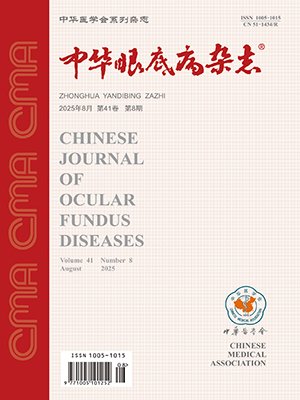Objective To observe the protective effect on retinal ganglion cells (RGC) and the safety of intravitreal injected acteoside in rats. Methods A total of 50 male Sprague Dawley rats with the weight of 190-210 g were used in this study. Fifteen rats were used for safety experiment of intravitreal injection of acteoside. The rats were divided into group A, B, C, control group and blank group, three rats in each group. The rats in group A, B and C were received intravitreal injection of 5 mu;l acteoside at the concentration of 1, 2, and 5 mg/ml, respectively. Phosphate buffer solution (PBS) was injected in rats of control group. No treatment was performed for blank group. The retinal structure was examined by hematoxylin-eosin (HE) staining of retinal frozen sections at one, two and three weeks after injection. The retinal ultrastructure was examined by ultrathin section under transmission electron microscope at one and three weeks after injection. Others 35 rats were used for experiment of protective effect of acteoside on RGC. The rats were divided into operation group A and B (n=8), sham operation group C and D (n=8), and blank group (n=3). The optic nerve of rats in operation group was clamped for 10 seconds after optic nerve exposure, while the optic nerve of rats in sham operation group was exposed only. The rats in operation group A and B were received intravitreal injection with 5 mu;l acteoside (1 mg/ml) and 5 mu;l PBS respectively. The rats in sham operation group C and D were received intravitreal injection with 1 mu;l acteoside (1 mg/ml) and 1 mu;l PBS respectively. No treatment was performed for blank group. The retinal structure was examined by HE staining of retinal frozen sections at one, two and four weeks after injection. Immunohistochemistry was used to measure the expression of growth associated protein 43 (GAP-43). RGC apoptosis was assessed by the terminal deoxynucleotidyl transferase mediated dUTPbiotin nickend labelling (TUNEL) method. Software of SPSS 13.0 was used for the data statistical analysis in this study. Results In the safety experiment of intravitreal injected acteoside, there was no abnormity of cornea, anterior chamber, lens, vitreous cavity and retina after injection. At one, two and three weeks after injection, the retina structure was normal without significant apoptosis, necrosis and inflammatory cell infiltration. The ganglion cell layer showed slightly edema; there was no obvious change of retinal ultrastructure after injection of acteoside with 5 mg/ml and 2 mg/ml, but slight change with the format of 1 mg/ml. Transmission electron microscopy showed that intravitreal injection of 5 mu;l acteoside at the concentration of 2 or 5 mg/ml can induce significant changes of micro-structures of retina, while injections at 1mg/ml can only induce minor changes.In the experiment of protective effect of acteoside on RGC, light microscope revealed that the cell showed typical changes of apoptosis in operation group, but not in sham operation group and blank group. At the first and second week after injection, compared with the sham operation group and blank group, the RGC number was decreased in operation group. The difference of RGC numbers between operation group A and B was statistically different (F=26.206,P<0.05). The RGC numbers in operation group continues to decrease at the fourth week after injection, there was obvious difference compared with the first and second week after injection (F=17.364,P<0.05), but there was no difference of RGC numbers among sham operation intragroup and between sham operation group and blank group at all the time points. Immunohistochemistry showed that at the first week after injection, the integrated absorbance (IA) value in operation group was higher than that in other groups (F=33.466,P<0.05); there was no difference of IA value between operation group A and B. At the second week after injection,IA value in operation group A had slightly declined, but higher than that in operation group B (F=14.391,P<0.05). At the fourth week after injection,IA value in operation group A declined further, but also higher than that in other groups (F=4.178,P<0.05). TUNEL showed that on the first week after injection, RGC apoptosis rate in operation group was increased than that in other groups (F=15.365,P<0.05). At the second week after injection, RGC apoptosis rate in operation group was decreased, and it in operation group A was lower than that in operation group B (F=15.365,P<0.05). At the fourth week after injection, RGC apoptosis rate in operation group was decreased obviously, there was no difference compared with other groups (F=2.057,P>0.05). There was no difference of RGC apoptosis rate between sham operation group and blank group at all the time points. Conclusion Intravitreal injection of 5 mu;l acteoside (1 mg/ml) is safe for rat retina, and can upregulate GAP-43 expression and inhibit RGC apoptosis in optic nerve crush rats.
Citation: 王双珠,曾勇,李燕. Protective effect on rat retinal ganglion cells and the safety of intravitreal injected acteoside. Chinese Journal of Ocular Fundus Diseases, 2013, 29(6): 593-599. doi: Copy
Copyright © the editorial department of Chinese Journal of Ocular Fundus Diseases of West China Medical Publisher. All rights reserved




